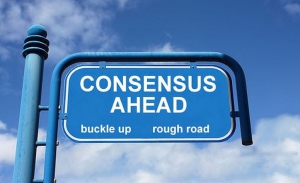Techniques for Decision-making
Main Takeaways
Reading Time: < 1 minute There are several methods for Decision-making you can use in group decisioning or group facilitation. All of these are variants of Consensus-based decisioning or Majority Voting — aka Democratic Voting. A completely different approach is systemic consensing.
Methods for Decision-making
There are several methods for Decision-making you can use in group decisioning or group facilitation. All of these are variants of Consensus-based decisioning or Majority Voting — aka Democratic Voting where you try to find minimal viable decisions by either debating and arguing or democratic voting.
A completely different approach is systemic consensing. Consensing does not require agreement, affirmation or even preference. Consent is reached by choosing the proposal with the least objections. The lowest level of objection — resistance — results to the highest acceptance.

Coloured Cards Voting
Coloured Cards Voting is a simple version of the group decision Five-to-Fold facilitation for decision-making. A group has to decide in a very short time on a proposal and possible alternatives to solve the issue.

Communicate Your Reaction Scheme of Decision-Making
Scrum-Land is a harsh and barren habitat to live in. It is difficult to enter Scrum-Land. And if we stay in Scrum-Land, we always have to inspect, how to make our living more comfortable and easier. However, there are some guidelines to make life easier.

Consensing — How to Boost Your Slow Deciding Company
You can kill your business or any change initiative easily by traditional consensus-based decision-making. However, you can boost your organisational decisioning dramatically by systemic consensing. Systemic Consensing does not require any alignment of agreements, affirmation or even preference but rather an alignment of tolerances. The consent is reached by choosing the proposal with the least objections only.

Consensus Decisioning — How to Find Minimal Viable Decisions
Consensus-based group decision-making is a cooperative process in which the voters develop and agree to support a decision in the best interest of the whole as a team. They do not only search for the agreement of most participants but also try to resolve or mitigate the objections of the minority to achieve the most agreeable decision. The group finds this minimal viable decision by discussing and arguing equally as many alternatives as possible until all group members consent with the highest agreement to "the final" solution even if it is not the favourite of each individual.

Constellation Game
Constellation Game is a playful transformation of the well-known system constellation method from systemic family therapy to the field of consensus-based decisioning.

Five to Fold
Five-to-Fold is a method for effective, holistic group decision-making. It invites, honors, and integrates all individual perspectives. Five-to-Fold is intended as a process for genuine decision-making, rather than for gathering feedback or informing a decision to be made elsewhere.

Five-Finger Voting
Five-Finger-Voting is a simple version of the group decision Five-to-Fold facilitation for decision-making. A group has to decide in a very short time on a proposal and possible alternatives to solve the issue.

Lightning Decision Jam
Lightning Decision Jam (LDJ) is a format for group decisioning. All open, unstructured discussion are replaced with a clear, timeboxed structured process. LDJ has its background in design thinking.

Stacey Matrix
Ralph Douglas Stacey, professor of management theory at Hertfordshire Business School, UK, invented the so-called Stacey-Matrix. In its original form, the Stacey-Matrix deals with decision-making in complex organizations. Today, the Stacey-Matrix is often combined with the Cynefin framework.

Systemic Consensing — What the Hell is this?
Consensus is time-consuming agreement, accord. Consensing instead is defined as having no significant objection. It does not require agreement, affirmation or even preference. Consent is reached by choosing the proposal with the least objections. The lowest level of objection — resistance — results to the highest acceptance.

The Cynefin Framework
The Cynefin Framework, created by Dave Snowden is a framework for sensemaking when finding decisions. It draws on research into systems theory, Complexity theory, network theory and learning theories. It helps to identify how we perceive situations and make sense of our own and other people's behaviour.

Thumb Voting
Thumb-Voting... vote with your thumbs. — Thumb up: positive; thumb down: negative; thumb horizontal: Don't care.







Leave A Comment